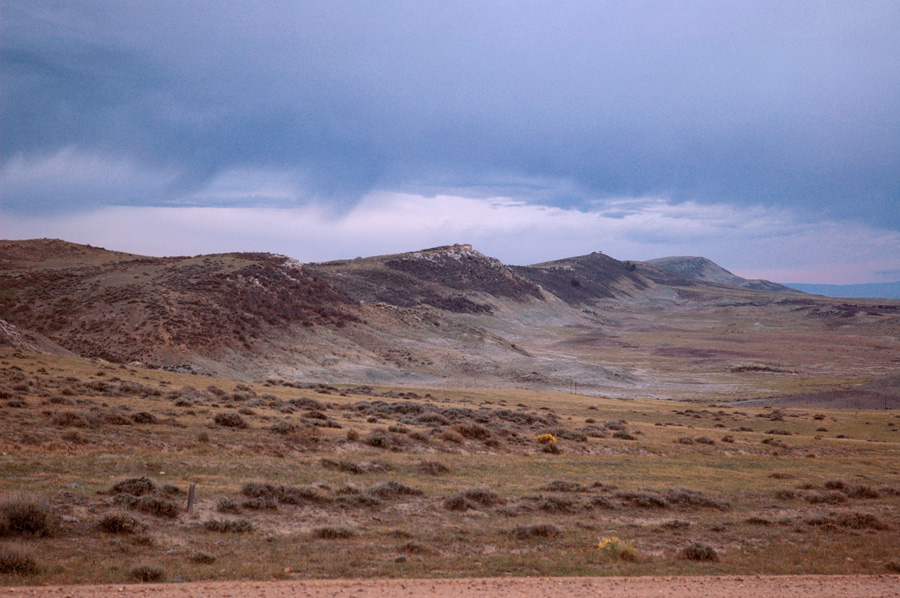@WFS,World Fossil Society,Riffin T Sajeev,Russel T Sajeev
Como Bluff is a long ridge with views of sagebrush prairie for as far as the eye can see. It extends roughly east-west, and is about 10 miles long and 1 mile wide. Geologically, the ridge is one limb of an anticline, formed as a result of the Earth compressing and folding, in association with larger geologic events caused by Rocky Mountain plate tectonics. The northern face of Como Bluff shows the outcrops of the Late Jurassic (145-150 million years ago) Morrison Formation. The Jurassic is a period in the Mesozoic Era (66 to 252 million years ago) better known as the “Age of the Dinosaurs.” At the start of the Jurassic Period, the breakup of Pangaea resulted in Laurasia to the north (which broke up into North America and Eurasia) and Gondwana to the south (which broke into Africa and South America). New oceans flooded the landmasses, with mountains rising on the seafloor, pushing sea levels higher onto the continents. All this water created a rather humid climate and lush subtropical environment, supporting a biologically diverse array of plants and animals. Cycads (palm tree-like foliage) covered the landscape, as well as conifers such as Araucaria and pines. The land was home to large terrestrial species, dinosaurs, with many of these predators at the top of the food chain.
Four types of sauropods were found at Como Bluff. These included the plant-eating Apatosaurus (the correct name for Brontosaurus), Diplodocus, at 90 feet long, Camarasaurus, and Barosaurus. Other large herbivores that inhabited the area during the late Jurassic period included the Stegosaurus (known for its heavy armor), and Camptosaurus, Laosaurus, and Dryosaurus. Carnivores included the Allosaurus, Ceratosaurus, and Ornitholestes.
Many dinosaurs roamed this region we now call Wyoming. Experts say it is a matter of time, place, and climate that prompted dinosaurs to live here. The diversity of plants provided for an abundance of herbivorous, plant-eating dinosaurs. This led to a corresponding abundance of carnivores, the meat-eating dinosaurs. Because so many dinosaur bones were found at Como Bluff, one might consider it the dinosaur capitol of the world, as the dinosaur records show. The discovery of their fossil remains were well preserved in the pastel colored claystones of the Morrison Formation at Como Bluff.
@WFS,World Fossil Society,Riffin T Sajeev,Russel T Sajeev



 December 29th, 2017
December 29th, 2017  Riffin
Riffin 
 Posted in
Posted in  Tags:
Tags: 